#28 December 1912
Explore tagged Tumblr posts
Text
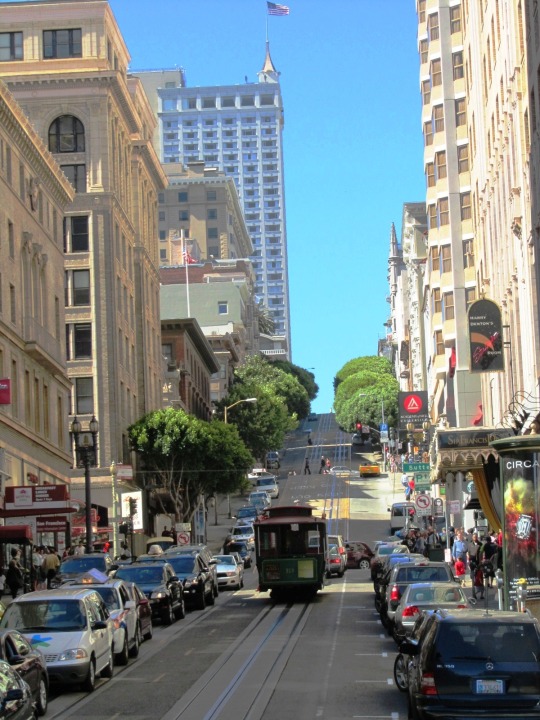
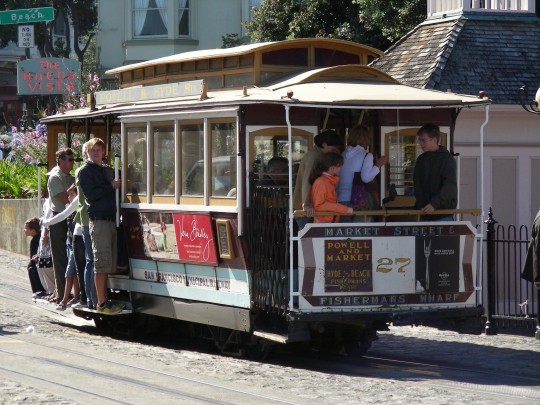

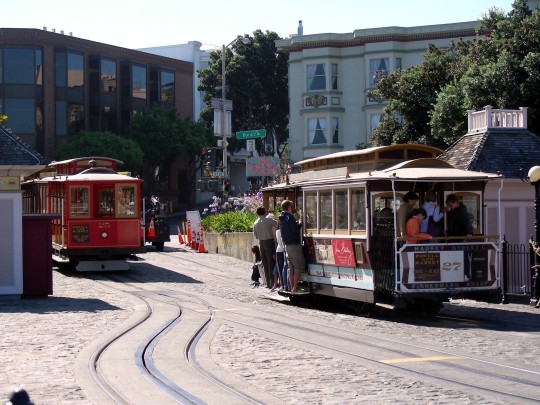
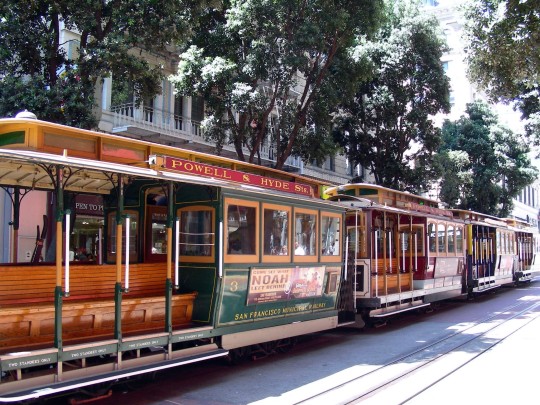
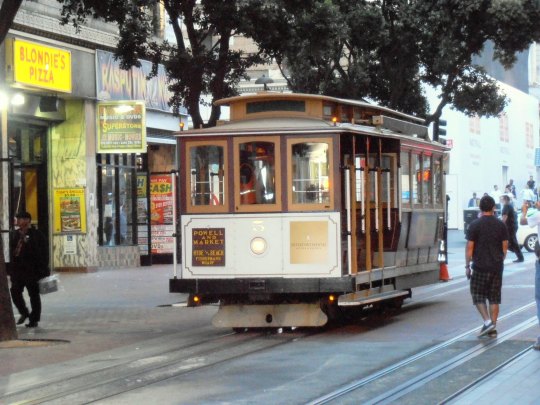

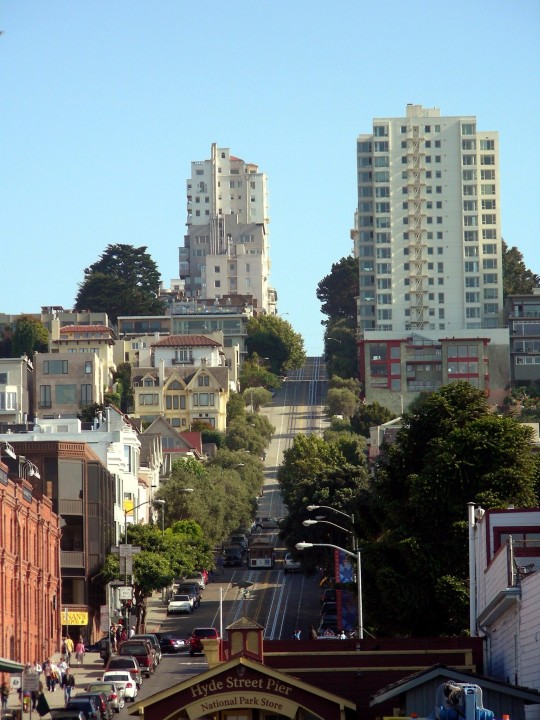
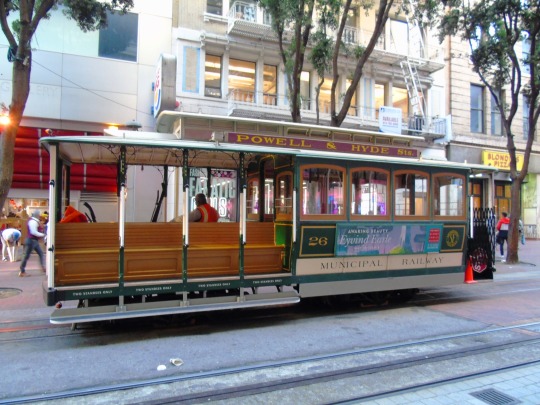
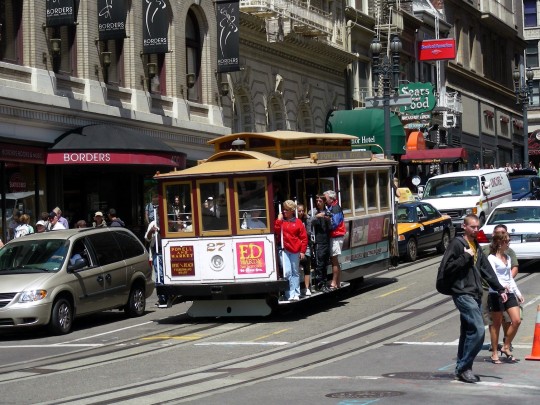
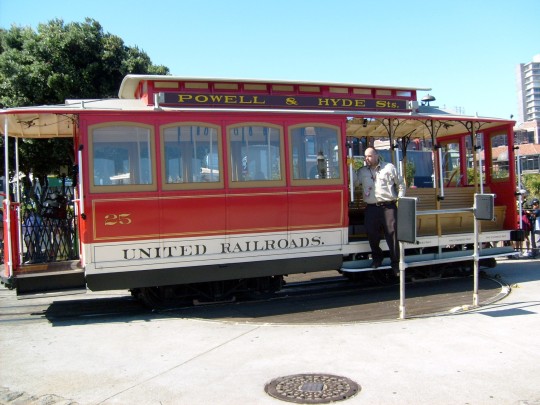
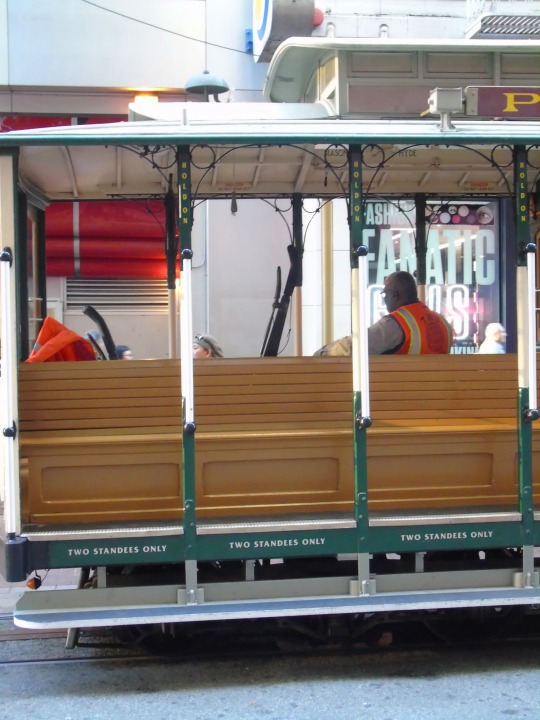
The first municipally owned streetcars took to the streets in San Francisco on December 28, 1912.
#first municipally owned streetcars#San Francisco#28 December 1912#USA#cable car#too touristy#Powell Street#anniversary#US history#travel#summer 2017#2012#2008#California#architecture#cityscape#vacation#original photography#tourist attraction#landmark#engineering#technology#street scene#West Coast
5 notes
·
View notes
Text

L'Art et la mode, no. 52, vol. 33, 28 décembre 1912, Paris. Robe de velours. Petite veste et manchon de velours ciselé garnis d’hermine. Imp. L. Lafontaine, Pars. Bibliothèque nationale de France
#L'Art et la mode#20th century#1910s#1912#on this day#December 28#periodical#fashion#fashion plate#color#bibliothèque nationale de france#dress#hat#shawl
122 notes
·
View notes
Text


Band of Brothers Birthdays
January
1 John S. Zielinski Jr. (b. 1925)
21 Richard D. “Dick” Winters (b. 1918)
26 Herbert M. Sobel (b. 1912)
30 Clifford Carwood "Lip" Lipton (b. 1920)
31 Warren H. “Skip” Muck (b. 1922) & Robert B. Brewer (b. 1924)
February
8 Clarence R. Hester (b. 1916)
18 Thomas A. Peacock (b. 1920)
23 Lester A. “Les” Hashey (b. 1925)
March
1 Charles E. “Chuck” Grant (b. 1922)
2 Colonel Robert L. “Bob” Strayer (b. 1910)
4 Wayne “Skinny” Sisk (b. 1922)
10 Frank J. Perconte (b. 1917)
13 Darrell C. “Shifty” Powers (b. 1923)
14 Joseph J. “Joe” Toye (b. 1919)
24 John D. “Cowboy” Halls (b. 1922)
26 George Lavenson (b. 1917) & George H. Smith Jr. (1922)
27 Gerald J. Loraine (b. 1913)
April
3 Colonel Robert F. “Bob” Sink (b. 1905) & Patrick S. “Patty” O’Keefe (b. 1926)
5 John T. “Johnny” Julian (b. 1924)
10 Renée B. E. Lemaire (b. 1914)
11 James W. Miller (b. 1924)
15 Walter S. “Smokey” Gordon Jr. (b. 1920)
20 Ronald C. “Sparky” Speirs (b. 1920)
23 Alton M. More (b. 1920)
27 Earl E. “One Lung” McClung (b. 1923) & Henry S. “Hank” Jones Jr. (b. 1924)
28 William J. “Wild Bill” Guarnere (b. 1923)
May
12 John W. “Johnny” Martin (b. 1922)
16 Edward J. “Babe” Heffron (b. 1923)
17 Joseph D. “Joe” Liebgott (b. 1915)
19 Norman S. Dike Jr. (b. 1918) & Cleveland O. Petty (b. 1924)
25 Albert L. "Al" Mampre (b. 1922)
June
2 David K. "Web" Webster (b. 1922)
6 Augusta M. Chiwy ("Anna") (b. 1921)
13 Edward D. Shames (b. 1922)
17 George Luz (b. 1921)
18 Roy W. Cobb (b. 1914)
23 Frederick T. “Moose” Heyliger (b. 1916)
25 Albert Blithe (b. 1923)
28 Donald B. "Hoob" Hoobler (b. 1922)
July
2 Gen. Anthony C. "Nuts" McAuliffe (b. 1898)
7 Francis J. “Frank” Mellet (b. 1920)
8 Thomas Meehan III (b. 1921)
9 John A. Janovec (b. 1925)
10 Robert E. “Popeye” Wynn (b. 1921)
16 William S. Evans (b. 1910)
20 James H. “Moe” Alley Jr. (b. 1922)
23 Burton P. “Pat” Christenson (b. 1922)
29 Eugene E. Jackson (b. 1922)
31 Donald G. "Don" Malarkey (b. 1921)
August
3 Edward J. “Ed” Tipper (b. 1921)
10 Allen E. Vest (b. 1924)
15 Kenneth J. Webb (b. 1920)
18 Jack E. Foley (b. 1922)
26 Floyd M. “Tab” Talbert (b. 1923) & General Maxwell D. Taylor (b. 1901)
29 Joseph A. Lesniewski (b. 1920)
31 Alex M. Penkala Jr. (b. 1924)
September
3 William H. Dukeman Jr. (b. 1921)
11 Harold D. Webb (b. 1925)
12 Major Oliver M. Horton (b. 1912)
27 Harry F. Welsh (b. 1918)
30 Lewis “Nix” Nixon III (b. 1918)
October
5 Joseph “Joe” Ramirez (b. 1921) & Ralph F. “Doc” Spina (b. 1919) & Terrence C. "Salty" Harris (b. 1920)
6 Leo D. Boyle (b. 1913)
10 William F. “Bill” Kiehn (b. 1921)
15 Antonio C. “Tony” Garcia (b. 1924)
17 Eugene G. "Doc" Roe (b. 1922)
21 Lt. Cl. David T. Dobie (b. 1912)
28 Herbert J. Suerth Jr. (b. 1924)
31 Robert "Bob" van Klinken (b. 1919)
November
11 Myron N. “Mike” Ranney (b. 1922)
20 Denver “Bull” Randleman (b. 1920)
December
12 John “Jack” McGrath (b. 1919)
31 Lynn D. “Buck” Compton (b. 1921)
Unknown Date
Joseph P. Domingus
Richard J. Hughes (b. 1925)
Maj. Louis Kent
Father John Mahoney
George C. Rice
SOURCES
Military History Fandom Wiki
Band of Brothers Fandom Wiki
Traces of War
Find a Grave
#this is going off who was on on the show#i double checked the dates and such but if you notice any mistakes please let me know :)#band of brothers#easy company#hbo war#not gonna tag everyone lol#mine: misc#yep it's actually Halls and not Hall#i've seen Terrence Harris's name spelled with as Terence but wenand t with two Rs s#since that's how it's spelled on photos of memorials and on his gravestone#I’ll do the pacific next! should be significantly shorter since there’s far fewer characters 😅
195 notes
·
View notes
Text
When Franz Kafka had "Written Nothing"
24 December 1910. It is midnight, but since I have slept very well, that is an excuse only to the extent that by day I would have written nothing. The burning electric light, the silent house, the darkness outside, the last waking moments, they give me the right to write even if it be only the most miserable stuff. And this right I use hurriedly. That’s the person I am.
28 November 1911. Have written nothing for three days.
07 January 1912. If I should now, in the evening, return to my relatives, I shall, since I have written nothing that I could enjoy, not appear stranger, more despicable, more useless to them than I,do to myself.
25 February 1912. I have written nothing for so long because of having arranged an evening for Löwy in the banquet room of the Jewish Town Hall on 18 February, at which I delivered a little introductory lecture on Yiddish. For two weeks I worried for fear that I could not produce the lecture. On the evening before the lecture I suddenly succeeded.
09 March 1914. I have written nothing for a year, nor shall I be able to write anything in the future; in my head there is and remains the one single thought, and I am devoured by it.
03 November 1914. Since August, the fourth day on which I have written nothing. The letters are the cause of it; I ’ll try to write none at all or only very short ones.
20 December 1921. Undeniably, there is a certain joy in being able calmly to write down: ‘Suffocation is inconceivably horrible.’ Of course it is inconceivable that is why I have written nothing down.
And When He "Wrote Nothing"
31 January 1912. Wrote nothing.
01 June 1912. Wrote nothing.
07 June 1912. Bad. Wrote nothing today. Tomorrow no time.
10 August 1912. Wrote nothing. Was in the factory and breathed gas in the engine-room for two hours. The energy of the foreman and the stoker before the engine, which for some undiscoverable reason will not start. Miserable factory.
13 March 1915. Got up at nine o’clock. Didn’t go home for supper, nor to Max’s either, where there was a gathering tonight. Reasons: lack of appetite, fear of getting back late in the evening; but above all the thought that I wrote nothing yesterday, that I keep getting farther and farther from it, and am in danger of losing everything I have laboriously achieved these past six months.
Excerpts from "The diaries of Franz Kafka 1910-1923"
#requested#franz kafka#literature#writeblr#dark academia#spilled ink#writing inspiration#writer's block#writing reference#kafka#writers on tumblr#writing prompt#poets on tumblr#poetry#diary#creative writing#lit#writing#light academia#quotes#writing resources
178 notes
·
View notes
Text

Today we're heading into the eternal ice of Antarctica and keeping a special lady company. The beautiful Endurance is waiting for us in door no. 7
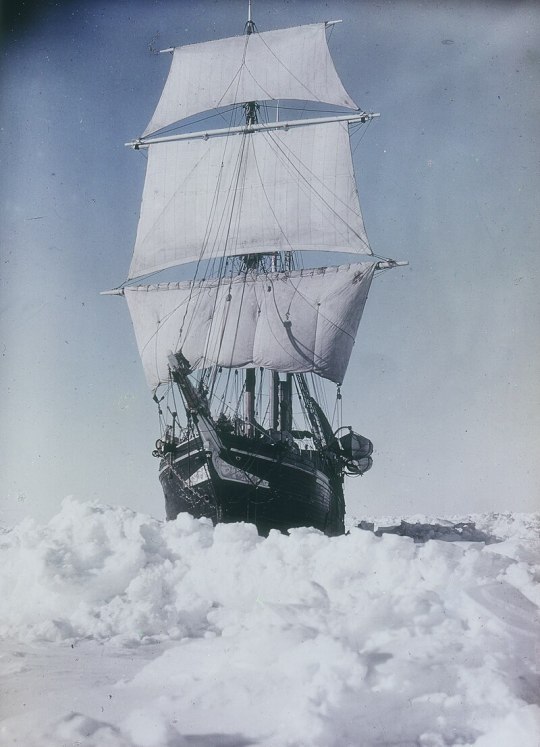
More about her here:
The three-masted schooner barque designed by Ole Aanderud Larsen (1884-1964) was built by the Framnæs shipyard in Sandefjord, Norway. When she was launched on 17 December 1912, she was named Polaris. She was 43.8 m long, 7.62 m wide and weighed 350 tonnes. In addition to square sails on the foremast and gaff sails on the main and mizzen masts, she had a 260 kW steam engine, which allowed a maximum speed of 10 knots (19 km/h). The ship was designed for polar conditions and constructed to minimise the pressure of the ice masses. With a thickness of 28 cm, the frames were made of greenheart wood, a particularly stable type of tropical wood, and were twice as thick as on conventional sailing ships of this size. The hull of the Endurance was designed to be relatively straight-sided, as it was only intended to sail in loose pack ice. She was therefore calmer in the sea than ships with a spherical hull, such as the Fram; however, this came at the cost of not being lifted significantly out of the pressure line in ice pressures and was therefore unsuitable for encasements in pack ice.
The ship was commissioned by the Belgian polar explorer Adrien de Gerlache and the Norwegian whaling magnate Lars Christensen, who actually wanted to use it for polar cruises of a more touristic nature. However, due to financial problems, Christensen was happy to sell his ship to Shackleton for 11,600 pounds sterling (approx. 934,000 euros, as of 2010) - an amount that was less than the original construction costs. Shackleton renamed her Endurance after his family's motto ‘Fortitudine vincimus’ (‘Through endurance we shall conquer’).
The Endurance left the port of Plymouth on 8 August 1914, around a week after Great Britain's entry into the First World War, and completed the journey to Antarctica with a stopover in Buenos Aires without any problems.
Before the crew of the Endurance could cross to the Antarctic mainland to cross the Antarctic as planned, the ship was trapped by the pack ice of the Weddell Sea in January 1915 like ‘an almond in a piece of chocolate’ - as the much-used comparison goes. After resisting the force of the pack ice for 281 days, the Endurance was crushed by the ice on 21 November 1915. The expedition team had previously saved themselves on a safe ice floe. Thanks to a masterly feat of seamanship and navigation, Shackleton and his crew managed to get out of this desolate situation without any losses with the help of three lifeboats that were salvaged from the Endurance.
Initially continuing with the pack ice and later on ice floes, the castaways drifted northwards in their camps along the Antarctic Peninsula until the floes broke into small pieces. They finally reached Elephant Island in their lifeboats. There, one of the boats was converted and set off for South Georgia with 6 men to fetch help, which was successful. Months later, the remaining men who were still stuck on Elephant Island were rescued by a Chilean navy guard boat.
In 2019, a private expedition attempted to locate the wreck of the Endurance, but was unsuccessful.
In January 2022, the Endurance 22 expedition began the search. The S. A. Agulhas II brought the expedition, in which marine physicist Stefanie Arndt from the Alfred Wegener Institute took part,[3] to the last coordinates of the Endurance mentioned. From the historical records, the expedition members knew that the ship must have sunk at ♁68° 39′ 30″ S, 52° 26′ 30″ W. According to the rules of the Antarctic Treaty, the wreck is a protected historical site that may not be touched.
On 5 March 2022, the expedition found the ship with a diving robot at a depth of 3008 m, 7.7 km from the recorded position. Photographs showed the wreck standing upright in excellent condition.
#naval history#tall ship#endurance#ernest shackleton#early 20th century#antarctica#advent calendar#day 7
158 notes
·
View notes
Text














BOBSTROLOGY
A completely serious presentation by @pegasusdrawnchariots and oatflatwhite
written version under the cut!
♈️Patrick O’Keefe [April 3 1926] ♈️Robert Sink [April 3 1905] ♈️John Julian [5 April 1924] ♈️Renée Lemaire [10 April 1914] ♈️James Miller [11 April 1924] ♈️Walter “Smokey” Gordon [April 15 1920] ♉️~Ronald Speirs [April 20 1920] ♉️Alton More [April 22 1920] ♉️Henry Jones [27 April 1924] ♉️Edward “Babe” Heffron [May 16 1923] ♉️John Martin [May 12 1922] ♉️Joseph Liebgott [May 17 1915] ♉️Norman Dike [May 19 1918] ♉️William Guarnere [April 28 1923] ♊️David Webster [June 2 1922] ♊️George Luz [June 17 1921] ♊️Roy Cobb [June 18 1914] ♋️Frederick “Moose” Heyliger [June 23 1916] ♋️Albert Blithe [June 25 1923] ♋️Donald Hoobler [28 June 1922] ♋️Thomas Meehan [8 July 1921] ♋️John Janovec [9 July 1925] ♋️Robert “Popeye” Wynn [July 10 1921] ♋️James "Moe" Alley [July 20 1922] ♌️~Burton “Pat” Christenson [July 23 1922] ♌️Eugene Jackson [29 July 1922] ♌️Donald Malarkey [July 31 1921] ♌️Edward Tipper [3 August 1921] ♍️Floyd Talbert [August 26 1923] ♍️Alex Penkala [August 30 1922] ♍️William Dukeman [3 September 1921] ♎️Eugene Roe [October 17 1922] ♎️Harry Welsh [September 27 1918] ♎️Lewis Nixon [September 30 1918] ♎️Ralph Spina [October 5 1919] ♎️Thomas Peacock [October 9 1923] ♏️Denver “Bull” Randleman [November 20 1920] ♑️Lynn “Buck” Compton [December 31 1921] ♑️Antonio Garcia [January 17 1925] ♒️Richard "Dick" Winters [January 21 1918] ♒️Herbert Sobel [January 26 1912] ♒️Carwood Lipton [January 30 1920] ♒️Warren “Skip” Muck [January 31 1922] ♓️Lester Hashey [23 February 1925] ♓️Charles “Chuck” Grant [1 March 1922] ♓️Robert Strayer [March 2 1912] ♓️Wayne “Skinny” Sisk [March 4 1922] ♓️Frank Perconte [March 10 1917] ♓️Darrell “Shifty” Powers [March 13 1923] ♓️Joseph Toye [March 14 1919]
6 Aries 🥉 8 Taurus 🥇 3 Gemini 7 Cancer 🥈 4 Leo 3 Virgo 5 Libra 1 Scorpio 0 Sagittarius 🥄 2 Capricorn 4 Aquarius 7 Pisces 🥈
10 🔥 13 🪨 12 💨 15 💧
20 cardinal 17 fixed 13 mutable
22 masculine 28 feminine
#band of brothers#hbo war#bobedit#hbowaredit#bobstrology#astrology#liz makes things#disclaimer: our interpretation is ironclad. we alone decide the law. argue w the wall.#< we say as an aries and scorpio with renee and bull in our corners <3
217 notes
·
View notes
Text

Conrad Veidt
Actually Hans Walter Conrad Veidt, was a German-British actor, born on 22 January 1893 in Berlin. initially became famous in Germany, thanks to films such as: "Different from the others", "Das Cabinet des Dr. Caligari" or "The Hands of Orlac". After a career in silent films, he became a best-paid star UFA.
As a child, he lived in the family home at Tieckstraße 39 in Berlin with his mother, Amalie Marie, and Philipp Heinrich Veidt, a former military man who became a government official. his father was strict unlike his mother who was caring and sensitive. He came from a Lutheran family in the Lutheran Church and was baptized on March 26, 1893. He also had an older brother, Karl, who died in 1900 of scarlet fever at the age of 9. two years after Karl's death, his father became seriously ill and required heart surgery. As Conrad's family was not wealthy and could not afford such an expense, the doctor only demanded the fee that the family could afford. Young Veidt was delighted with the surgeon's kindness and swore to follow the example of the man who saved his father's life, from that moment on he wanted to become a surgeon. Niesetu's dream of becoming a surgeon was thwarted when he graduated in 1912 without a diploma and placed 13th out of 13 students, and was also discouraged by the amount of study it took to get into medical school. However, a new career path opened up for Conrads during a Christmas performance in which he delivered a long prologue before the curtain rose. The performance was bad, but the audience thought that Veidt did really great. Conrad became interested in actors, but his father considered stage artists to be outcasts and often called them gypsies. Thanks to part-time work and pocket money from his mother, Veidt was able to afford to attend theaters in Berlin. After each performance he stood in front of the Deutsches Theater waiting for the actors or hoping that he would be mistaken for an actor. At the end of the summer of 1912, he met a theater porter who introduced him to the actor Albert Blumenreich, who agreed to give Corad acting lessons for six marks. He was given 10 lessons before auditioning for Max Reinhardt reciting Goethe's Faust. Reinhardt offered Veidt a contract as an assistant for one season from September 1913 to August 1914, with a salary of 50 marks per month. During this time he played episodic roles as spear carriers and soldiers. His mother attended almost every performance of her son. After a successful career, they decided to extend his contract for a second season, but World War I broke out and on December 28, 1914, Conrad was enlisted in the army. In 1915 he was sent to the Eastern Front as a non-commissioned officer and took part in the Battle of Warsaw. In the meantime, he contracted jaundice and pneumonia and had to be evacuated to a hospital on the Baltic Sea. While convalescing, he received a letter from his girlfriend Lycie Mannheim informing him that she had found a job at the Front Theater in Liepāja. This news prompted Veidt to apply to the theater. because his condition was not improving, the army allowed him to join the theater so he could entertain the soldiers. While working in the theater, his relationship with Lucie ended. In 1916 he was examined by the army again and found unfit for service; On January 10, 1917, he was granted full parole. Conrad returned to Berlin where he was accepted back into the Deutsches Theater. There he played a small role as a priest which earned him a favorable review - the reviewer hoped that "God would save Veidt from the cinema" but luckily this did not happen.

One of his first and most important films was the role of a sleepwalker in "Das Cabinet Des Dr. Caligari" (1920) directed by Robert Wiene, which became a classic of German and expressionist cinema. The film also changed a lot in cinematography and was quite controversial for its time, but now it is well known to us and appreciated by every fan of cinematography. he also first starred in the film "Anders als die Andern" (1919) in which Conrad and Reinhold Schünzel played the main roles. All copies of the film were corrupted by the Nazis because the homosexuality depicted in the film was considered a disease at that time. Currently, only a small part of the film can be watched, that is, the part of the film that was saved. In 1924, he played in the film "Orlac's Hands" based on the book by Maurice Renard. It's time for Conrad's great success outside Europe. In 1928, he played the role of Gwynplaine in the film "The Man Who Laughs" based on the book by Victor Hugo (I recommend watching the film, it's really great. Conrad's role in this film influenced culture, Joker's appearance is inspired by the Veidt. Of course, it is worth mentioning roles in horror films, e.g. "Der Student Von Prag" (1926) and "Das Wachsfigurenkabinett" (1924). He also starred in the first German film with sound. "Das Land ohne Frauen" (1929). At the end of the 20s he went to Hollywood where he played a few roles, but with the advent of sound in films he had to give up acting in America and returned to Germany. During this time, he became a teacher for many aspiring artists, including Lisa Golm.Interesting fact: the role of Dracula was written specifically for Conrad, but Veidt was afraid that his English was too poor, instead the role of Dracula was played by Béla Lugosi, whose English was not better.

Veidt did not support the Nazi regime and sent funds to help the British during the German Blitz bombings. Shortly after the Nazi Party took power in Germany in March 1933, Joseph Goebbles purged the film industry of political opponents and Jews. In April 1933, a week after Cornad's wedding to Prager, a Jewish woman also known as "Lilli", they emigrated to Britain before any action could be taken against them. Goebbles imposed a "race questionnaire" in which every actor employed in Germany had to declare his "race" in order to continue working. When Veidt filled out the questionnaire, he answered the question about his race by writing "Jew." Veidt was not of Jewish origin, but his wife was, and Veidt would not abandon the woman he loved so much or cooperate with the regime, as many others did. Veidt was against anti-Semitism and showed it publicly and said it loudly. he supported Jews who were deprived of German citizenship in the spring of 1933. Conrad was informed that if he got a divorce and declared support for the new regime, he would still be able to operate in Germany, which he rejected because, as he claimed, nothing could cause him to divorce Lilli. After arriving in United Kingdom, Veidt improved his English and starred in the original anti-Nazi films The Wandering Jew (1933) and Jew Süss (1934). On February 25, 1939, he received British citizenship. During this time, Conrad made films in both French and English.
I think these are the key and important moments in Conrad Veidt's life.
Trivia
Conrad, through his lawyers, gave children locked in shelters in London 2,000 tins of sweets, 2,000 large packets of chocolate and 1,000 gift envelopes in the form of British currency. all to improve their mood during the Christmas :)
Veidt helped his parents-in-law from Austria get to Switzerland and in 1935 he managed to obtain permission from the Nazi government for his ex-wife and their daughter to move to Switzerland. He also offered to help Felizitas' mother ( his ex-wife's mother), Frau Radke, leave Germany. but she refused, saying "no damn little Asutrian Nazi corporal will make me leave my house." Apparently she survived the war, but Corad never saw her again.
"There are two different kinds of men. There are the men men, what do you call them, the man's man, who likes men around, who prefers to talk with men, who says the female can never be impersonal, who takes the female lightly, as playthings. I do not see a man like that in my mirror. Perhaps, it is because I think the female and the male attract better than two men, that I prefer to talk with females. I do. I find it quite as stimulating and distinctly more comfortable. I have a theory about this - it all goes back to the mother complex. In every woman, the man who looks may find - his mother. The primary source of all his comfort. I think also that females have become too important just to play with. When men say the female cannot discuss impersonally, that is no longer so. When it is said that females cannot be geniuses, that is no longer so, either. The female is different from the male. Because she was born to be a mother. There is no doubt about that. But that does not mean that, in some cases, she is not also born a genius. Not all males are geniuses either. And among females today there are some very fine actresses, very fine; fine doctors, lawyers, even scientists and industrialists. I see no fault in any female when she wears slacks, smokes (unless it is on the street, one thing, the only thing, which I don't like), when she drives a car... when men say things like "I bet it is a woman driving" if something is wrong with the car ahead - no, no. These are old, worn out prejudices, they do not belong in today"
~°~
Conrad died on April 3, 1943 from heart disease.
(Sorry for any mistakes, remember I'm not from an English-speaking country, the information comes from Wikipedia and various websites that you can easily find :)
#actor#movie#movies#old movies#old cinema#1930s#1920s#conrad veidt#das cabinet des dr. caligari#the hands of orlac#waxwork#the man who laughs#old hollywood#classic hollywood#cinema#the cabinet of dr. caligari
26 notes
·
View notes
Note
Has there ever been a time when we haven't had a vice president?
John Adams was sworn in as our first Vice President in 1789 and in the 234 years since then, we've gone without a VP for 37 years and 290 days.
Until the ratification of the Twenty-Fifth Amendment, there was no mechanism for filling a vacancy in the Vice Presidency, so in several instances we've gone almost entire Presidential terms without a Vice President.
7 Vice Presidents Died In Office: •George Clinton (Jefferson's second VP & Madison's first VP), died April 20, 1812, leaving the Vice Presidency vacant for 318 days. •Elbridge Gerry (Madison's second VP), died November 23, 1814, leaving a vacancy for 2 years, 101 days. •William Rufus DeVane King (Pierce's VP), died April 18, 1853, leaving a vacancy for 3 years, 320 days. •Henry Wilson (Grant's second VP), died November 22, 1875, leaving a vacancy for 1 year, 102 days. •Thomas A. Hendricks (Cleveland's first VP), died November 24, 1885, leaving a vacancy for 3 years, 99 days. •Garret A. Hobart (McKinley's first VP), died November 21, 1899, leaving a vacancy for 1 year, 103 days. •James S. Sherman (Taft's VP), died October 30, 1912, leaving a vacancy for 125 days.
2 Vice Presidents Resigned: •John C. Calhoun (VP under John Quincy Adams and Jackson's first VP), resigned on December 28, 1832, leaving a vacancy for 66 days. •Spiro Agnew (Nixon's first VP), resigned on October 10, 1973, leaving a vacancy for 57 days.
9 Vice Presidents Succeeded to the Presidency: •John Tyler (William Henry Harrison's VP), assumed office upon President Harrison's death on April 4, 1841, leaving a VP vacancy for 3 years, 333 days. •Millard Fillmore (Taylor's VP), assumed office upon President Taylor's death on July 9, 1850, leaving a VP vacancy for 2 years, 238 days. •Andrew Johnson (Lincoln's second VP), assumed office upon President Lincoln's death on April 15, 1865, leaving a VP vacancy for 3 years, 323 days. •Chester Arthur (Garfield's VP), assumed office upon President Garfield's death on September 19, 1881, leaving a VP vacancy for 3 years, 166 days. •Theodore Roosevelt (McKinley's second VP), assumed office upon President McKinley's death on September 14, 1901, leaving a VP vacancy for 3 years, 171 days. •Calvin Coolidge (Harding's VP), assumed office upon President Harding's death on August 2, 1923, leaving a VP vacancy for 1 year, 214 days. •Harry S. Truman (FDR's third VP), assumed office upon President Roosevelt's death on April 12, 1945, leaving a VP vacancy for 3 years, 283 days. •Lyndon B. Johnson (JFK's VP), assumed office upon President Kennedy's death on November 22, 1963, leaving a VP vacancy for 1 year, 59 days. •Gerald Ford (Nixon's second VP), assumed office upon President Nixon's resignation on August 9, 1974, leaving a VP vacancy for 132 days.
Only two Vice Presidential vacancies have been filled under the provisions of the 25th Amendment. Gerald Ford was appointed to the Vice Presidency by President Nixon following Spiro Agnew's resignation in October 1973 and was confirmed by Congress in December 1973 (a nominee to fill a Vice Presidential vacancy must be confirmed separately by a majority vote of both chambers of Congress). On August 9, 1974, Nixon resigned as President and Ford succeeded to the White House, leaving the Vice Presidency vacant for the second time in less than a year. President Ford nominated Nelson Rockefeller as Vice President on August 20 and he was confirmed by Congress in December 1974.
#History#Vice Presidency#Vice President of the United States#Vice Presidents#Vice Presidential Vacancies#Constitution#Twenty-Fifth Amendment#Vice Presidential nominees#VPs#VPOTUS#Vice Presidential History#Presidents#Presidency#Presidential History#Presidential Succession
34 notes
·
View notes
Text

Julie Wolfthorn (8 Jan 1864 – 26 December 1944) was a German painter. Born as Julie Wolf(f) to a middle-class Jewish family, she later styled herself as Julie Wolfthorn after Thorn (Toruń), her city of birth. Wolfthorn was born in Thorn (Toruń) in the Prussian Province of Prussia. In 1883, she moved to Berlin to live with her relatives after her parents died. In 1890, she studied in Curt Herrmann's Drawing and Painting School for ladies. Since German art academies would not permit women, she traveled to Paris to study at the Académie Colarossi and Académie Julian, where she gained much of the skills needed to become successful. After she finished her studies in Paris, Wolfthorn returned to Berlin. In 1898, she became the co-founder of the Berlin Secession and the "Verein der Künstlerinnen und Kunstfreunde Berlin" (Association of Artists and Art Lovers Berlin). In 1905, Julie Wolfthorn and over 200 female artists signed a petition to be allowed to join the Prussian Academy of Arts, which was ultimately rejected by the academy director. With Käthe Kollwitz, she founded the exhibition cooperation "Verbindung Bildender Künstlerinnen". The two women are elected to directors of the "Secession" in 1912, but she and Fanny Remak are removed in 1933. Julie Wolfthorn stayed in Berlin, working with the "Kulturbund Deutscher Juden" (Cultural Association of German Jews) under pressure from the Nazis, which declared it illegal in 1941, arresting the members and seizing the possessions. On 28 October 1942, 78-year-old Julie Wolfthorn and her sister Luise Wolf who, like all other family members except the painter called themselves Wolff or Wolf, were transported to the Theresienstadt concentration camp. Wolfthorn is said to have continued drawing, as far as possible under the circumstances, until her death on 26 December 1944 source and more Wikipedia

#Julie Wolfthorn#german#german jewish#Julie Wolf(f)#Julie Wolf#art by women#art#art herstory#women painters#jewish
4 notes
·
View notes
Text












The first municipally owned streetcars took to the streets in San Francisco on December 28, 1912.
#first municipally owned streetcars#San Francisco#28 December 1912#USA#cable car#too touristy#Powell Street#anniversary#US history#travel#summer 2017#2012#2008#California#architecture#cityscape#vacation#original photography#tourist attraction#landmark#engineering#technology#street scene#West Coast
1 note
·
View note
Text
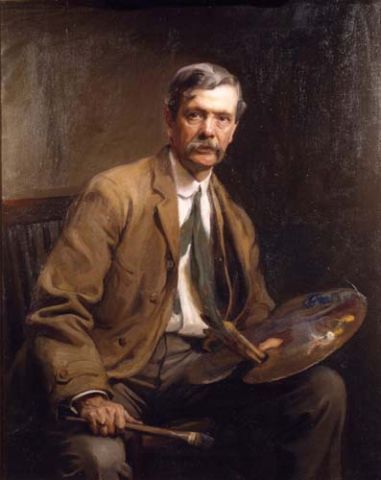
Philip de László - Portrait of Portrait of Sir Alfred East - 1907
Philip Alexius László de Lombos MVO RBA (born Fülöp Laub; Hungarian: Fülöp Elek László; 30 April 1869 – 22 November 1937), known professionally as Philip de László, was an Anglo-Hungarian painter known particularly for his portraits of royal and aristocratic personages. In 1900, he married the Anglo-Irish socialite Lucy Guinness, and he became a British subject in 1914. László's patrons awarded him numerous honours and medals. He was invested with the Royal Victorian Order by Edward VII in 1909 and, in 1912, he was ennobled by Franz Joseph I of Austria; becoming a part of the Hungarian nobility.
Sir Alfred Edward East RA RBA (15 December 1844 – 28 September 1913) was an English painter.
Alfred East was born in Kettering in Northamptonshire and studied at the Glasgow School of Art. His romantic landscapes show the influence of the Barbizon school. His The Art of Landscape Painting in Oil Colour was published in 1906. In April 1888 he had shared an exhibition at the galleries of the Fine Art Society with T.C. Gotch and W. Ayerst Ingram, and was commissioned the following year by Marcus Huish, managing director of the Society, to spend six months in Japan to paint the landscape and the people of the country. When the exhibition of 104 paintings from this tour was held at the Fine Art Society in 1890 it was a spectacular success.
East visited Spain after 1892 when he visited Algeciras at the southern end of Iberia.
In 1906 he was elected president of the Royal Society of British Artists, a position he held until his death. In that year, he published his 107-page illustrated "The Art of Landscape Painting in Oil Colour"; in its preface, he made the observation: "The greatest errors in landscape painting are to be found – contradictory as it may appear – not so much in the matter of technique as in the painter's attitude toward Nature". In this book he described his techniques using colours, half-tones and pencil sketches.
He was awarded a Knighthood in 1910 by King Edward VII. His portrait was painted by Philip de Laszlo. The Alfred East Art Gallery in Kettering, designed by John Alfred Gotch opened on 31 July 1913. The Alfred East Gallery is Northamptonshire's oldest purpose-built art gallery.
East was elected an Associate of the Royal Academy in 1899, having been a regular exhibitor since 1883 and elected to full membership in 1913.
On 28 September 1913, Alfred East died at his London residence in Belsize Park. His body was taken back to Kettering and lay in state in the Art Gallery, where it was surrounded by the pictures he had presented to the town, and attracted crowds of several thousands.
32 notes
·
View notes
Text
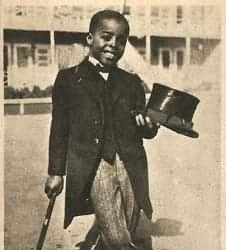
Ernest Fredric “Ernie” Morrison was the first Black child movie star. Morrison, who performed under the stage name Sunshine Sammy, was most famous as one of the Dead End Kids/East Side Kids.
As the oldest Our Gang cast-member Morrison earned $10,000 a year, making him the highest-paid Black actor in Hollywood. He made 28 episodes from 1922 to 1928 before he ditched Hollywood for New York’s vaudeville stages. He was featured on the same bills with such up-and-coming acts as Abbott and Costello and Jack Benny. After a few years, he returned and acted in the Dead End Kids movies. From the beginning, Morrison tapped into his experiences growing up on the East Side of New York City to shape the character of “Scruno.” He spent three years with the gang before leaving to work with the Step Brothers act, a prominent Black stage and film dance act.
Morrison was born on December 20, 1912 in New Orleans, Louisiana. He was the oldest child and only son born to Joseph Ernest Morrison, a grocer and later actor, and his wife, Louise Lewis. Ernie was later joined by three younger sisters, Florence, Vera, and Dorothy.
He made his film debut in the 1916’s The Soul of a Child at the age of 3. The story goes that his father worked for a wealthy Los Angeles family that had connections in the film industry. One day the producer friend asked Joseph Morrison if he could bring his son by the studio. Apparently the original child actor hired would not stop crying and they had pretty much given up trying to console him. Joseph brought young Morrison and the producer and director were impressed at how well behaved he was. It was this positive disposition that garnered his nickname, “Sunshine.” His father would later add “Sammy” to the moniker.
From 1917 to 1922, Morrison’s career was mainly in shorts that paired him with another popular child star of the silent era, Baby Marie Osborne. He also appeared in Harold Lloyd shorts and later with another comedian of the day, Snub Pollard and a now forgotten comedic leading lady of the day, Marie Mosquini. A feature was created for him, called The Sunshine Sammy Series, but only one segment was produced. Some critics believed, however, that the Sunshine Sammy episode provided comedy producer Hal Roach with the idea for the Our Gang film shorts, later shown on television and known by several other names, including the Little Rascals.
As the oldest Our Gang cast-member Morrison earned $10,000 a year, making him the highest paid Black actor in Hollywood. He made 28 episodes from 1922 to 1928 before he ditched Hollywood for New York’s vaudeville stages. He was featured on the same bills with such up-and-coming acts as Abbott and Costello and Jack Benny. After a few years, he returned and acted in the Dead End Kids movies. From the beginning, Morrison tapped into his experiences growing up on the East Side of New York City to shape the character of “Scruno.” He spent three years with the gang before leaving to work with the Step Brothers act, a prominent Black stage and film dance act.
Morrison was drafted into the army during World War II, where he appeared as a singer-dancer-comedian for troops stationed in the South Pacific. For several years after being discharged from the war, Morrison turned down a series of offers to return to show business, saying that he had fond memories of the movies but no desire to be part of them again. He left show business entirely, and took a job in an aircraft assembly plant and spent the next 30 years in the aircraft industry, apparently doing very well financially.
After his retirement, Morrison was rediscovered by film buffs who had learned of him after the revival of the Little Rascals in the 1970s. He made guest appearances in several television situation comedies, including Good Times and The Jeffersons.
Morrison died of cancer in Lynwood on July 24, 1989. He is interred at Inglewood Park Cemetery in Inglewood California.
Morrison, who appeared in 145 motion pictures, was inducted into the Black Filmmakers Hall of Fame in 1987.
#Ernest Fredric Morrison#Ernie#first black#child#movie star#black history#african american history#read about him#knowledge is power
5 notes
·
View notes
Text
The Journey of Living at Downton - Masterlist
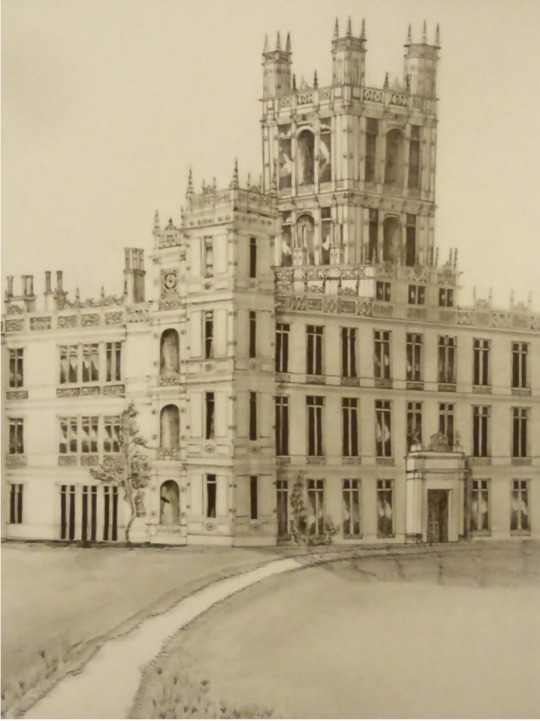
Pairing:
Tom Branson/Original Female Character
Warnings:
Major Character Death, Minor Character Death, Implied/Referenced Character Death, Period Typical Attitudes, Cannon-Typical Violence, Implied/Referenced Suicide
Summary:
Emma’s life used to be fairly normal one for someone living in England in the early 21st century, nothing peculiar but that all changed when in 2021, at 19, she woke up in the past, more specifically 1909.
Emma turned up in Yorkshire, England on a mild day (what else) in the grounds of an estate called Downton Abbey. After literally falling onto the floor right in front of said owners of the estate, the Earl and Countess of Grantham, Robert and Cora Crawley.
——
A young girl from the 21st century ends up in the world of Downton Abbey. Not a typical one where it is another Crawley sister or where she’s from a world where Downton Abbey is a TV show.
Chapters:
Chapter 1: April to Summer 1912
Chapter 2: September to October 1912
Chapter 3: April to May 1913
Chapter 4: End of May 1913
Chapter 5: July to August 1913
Chapter 6: May 1914
Chapter 7: July to August 1914
Chapter 8: Autmun 1916
Chapter 9: April 1917
Chapter 10: July to September 1917
Chapter 11: Early 1918
Chapter 12: August 1918
Chapter 13: October to November 1918
Chapter 14: February 1919
Chapter 15: April 1919
Chapter 16: April 1919 to January 1920
Chapter 17: March 1920
Chapter 18: April to Early May 1920
Chapter 19: Late May 1920
Chapter 20: Late July 1920
Chapter 21: Early August 1920
Chapter 22: Early August 1920 Continuation
Chapter 23: Mid August 1920
Chapter 24: Mid August to End of September 1920
Chapter 25: September 1921
Chapter 26: February 1922
Chapter 27: March 1922
Chapter 28: April 1922
Chapter 29: April 1922 Continuation
Chapter 30: May 1922
Chapter 31: June 1922
Chapter 32: July 1922
Chapter 33: Early August 1922
Chapter 34: May 1923
Chapter 35: February 1924
Chapter 36: February to Late April 1924
Chapter 37: Late April to Early May 1924
Chapter 38: Summer 1924
Chapter 39: September 1924
Chapter 40: Late September 1924
Chapter 41: Late September to Early October 1924
Chapter 42: Mid to Late October 1924
Chapter 43: November to December 1924
Chapter 44: January to Early May 1925
Chapter 45: Mid May 1925
Chapter 46: Mid to Late May 1925
Chapter 47: June 1925
Chapter 48: July 1925
Chapter 49: August 1925
Chapter 50: September to December 1925
Chapter 51: July 1927
Chapter 52: April 1928 to January 1929
Children of Downton - Spoilers!!!
Just a little additional post explaining when the children born during the show were born and parents. Not that important but if anyone wants to keep track, it’s here rather than sifting through chapters.
Wattpad access
fanfiction.net access
Ao3 access
#downton abbey#tom branson#tom Branson x oc#original female character#sybil crawley#sybil Crawley x oc#original male character#anna bates#anna smith#john bates#anna x bates#mary crawley#matthew crawley#mary x matthew#cora crawley#robert crawley#robert x cora#edith crawley#edith x michael#Michael gregson#Bertie Pelham#Edith x Bertie#mary x henry#henry talbot#thomas barrow#major character death#time travel
1 note
·
View note
Text











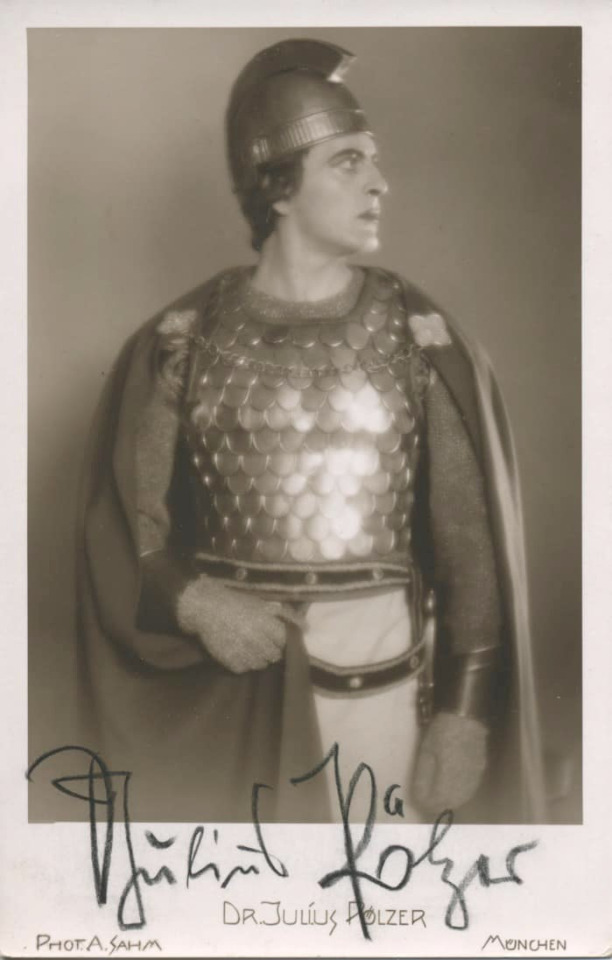

On June 10, 1865, the world premiere of "Tristan and Isolde" by R. Wagner took place in Munich.
„Isolde… wie schön…“
Here are some of the first tenors to have sung the role of Tristan over the years and contributed to the success of this work through their dedication.
Erik Schmedes (27 August 1868, in Gentofte, Denmark – 21 March 1931, in Vienna), Danish heldentenor.
Alois Pennarini (Vienna 1870 - Liberec, Czechoslovakia 1927), Austrian-Hungarian first spinto tenor then heldentenor.
Modest Menzinsky (29 April 1875 in Novosilky, Galicia - 11 December 1935 in Stockholm), Ukrainian heroic tenor.
Karl Kurz-Stolzenberg
Adolf Gröbke (May 26, 1872 Hildesheim - September 16, 1949 Epfach), German tenor.
Iwan Ershov (November 8, 1867 – November 21, 1943), Soviet and Russian dramatic tenor.
Alfred von Bary (January 18, 1873 in Valletta, Malta - September 13, 1926 in Munich), German tenor.
Alexander Bandrowsky (April 22, 1860 in Lubaczów - May 28, 1913 in Cracow), Polish Tenor.
Jacques Urlus (6 January 1867 in Hergenrath, Rhine Province – 6 June 1935 in Noordwijk, Netherlands), Dutch dramatic tenor.
Francesc Viñas (27 March 1863 – 14 July 1933), Spanish tenor.
Richard Schubert (Dessau, Germania; December 15, 1885 - Oberstaufen, Germania; October 12, 1959), German tenor.
Dr. Julius Pölzer (April 9, 1901 in Admont - February 16, 1972 in Vienna), Austrian tenor.
Giuseppe Borgatti (Cento, 17 March 1871 – Reno di Leggiuno, 18 October 1950), dramatic tenor. (with Magini-Coletti as Kurwenal)
Antonio Magini-Coletti (17 February 1855 – 21 July 1912), Italian baritone.
#opera#classical music#music history#bel canto#composer#classical composer#aria#tenor#classical studies#Tristan and Isolde#classical musician#classical musicians#musician#musicians#classical history#historian of music#history#maestro#chest voice#Tristan und Isolde#Richard Wagner#Wagner#classical singer#classical singing#opera history#music#classical
4 notes
·
View notes
Video
youtube
Edward the Blue 1896 Furness Railway 21/K2 Class Engine, Henry the Green 1919 London North Eastern Railway Gresley A1 Engine, Gordon the Big 1922 Great Northern Railway Class A1 Pacific Express Engine, 87546, 98462, 1923 London Midland & Scottish Railway Cattle Truck, 1925 London Midland & Scottish Railway 10 Ton Banana Van & Troublesome 1925 Welshpool & Llanfair Light Railway 7-Plank Open Trucks - The Three Railway Engines 12th May 1945
Thomas the 1915 London Brighton & South Coast Railway Class E2 0-6-0T Tank Engine, Annie & Clarabel the 1870s London Brighton & South Coast Railway Stroudley Coaches, James the Red 1912 Lancashire & Yorkshire Railway Class 28 Engine - Thomas the Tank Engine 14th September 1946
Bertie the 1935 AEC Regal "T Class" London Country Area Bus, Terrance the 1934 Caterpillar Model 70 Tractor - Tank Engine Thomas Again 31st December 1949
Percy the Small 1925 Avonside SS Class Trojan Engine - Troublesome Engines 15th January 1950
Toby the 1914 Great Eastern Railway Class C53 Wisbech Steam Tram Engine, Henrietta the 1884 Great Eastern Railway Wisbech & Upwell Tramway Coach, 1921 14-Ton Tar Tanker & Green 1935 AEC Regal "T Class" London Country Area Bus - Toby the Tram Engine 26th July 1952
Trevor the 1927 William Foster & Co. Traction Engine No. 14593 - Edward the Blue Engine 23rd November 1954
Skarloey the Famous Old 1864 Talyllyn Railway No. 1 "Talyllyn" Engine, Rheneas the Gallant Old 1865 Talyllyn Railway No. 2 "Dolgoch" Engine, Peter Sam the Friendly 1920 Talyllyn Railway No. 4 "Edward Thomas" Engine, Sir Handel the Wise Old 1904 Talyllyn Railway No. 3 "Sir Haydn" Engine, Agnes, Ruth, Lucy, Jemima & Beatrice the 1865 Talyllyn Railway coaches Nos. 1 - 5 - Four Little Engines 22nd November 1955
Duck the 1929 Great Western Railway 5700 Class, Harold the 1949 Sikorsky S-55 helicopter - Percy the Small Engine 1st January 1956
1950 British Railway 16-Ton Mineral Truck, 1925 London Midland & Scottish Railway Class 3F “Jinty” & 1932 London Midland & Scottish Railway OF Kitson “Pug”, 1930 London Midland & Scottish Railway "Patriot" Class Big City Engine - the Eight Famous Engines 15th September 1957
1903 Great Western Railway 3700 No. 3440 "City of Truro", "Devious" Diesel the Mean 1952 British Railway Class 8 Engine, 1903 10-Ton Salt Van - Duck & the Diesel Engine 23rd June 1958
Duncan the Stubborn 1928 Talyllyn Railway No. 6 Douglas Engine - The Little Old Engine 1st January 1959
Rusty the Little 1957 Talyllyn Railway No. 5 Midlander Diesel Engine - The Little Old Engine 1st January 1959
Cora the 1885 Talyllyn Railway Tool Van No. 6 - The Little Old Engine 1st January 1959
Ada, Jane & Mabel the 1955, 1956 & 1957 Talyllyn Railway Coaches Nos. 11, 12 & 13 - The Little Old Engine 1st January 1959
1959 Talyllyn Railway 2-Bar Slate Truck - The Little Old Engine 1st January 1959
Donald & Douglas the Scottish 1909 CR McIntosh 812 Class Engines, 1929 British Railway 20-Ton Spiteful Brake Van - The Twin Engines 15th September 1960
1925 Welshpool & Llanfair Light Railway 5-Plank Open Ffarquhar Quarry Truck, Daisy the 1960 British Railway Class 101 Diesel Railcar - Branch Line Engines 15th September 1961
George the 1950 Aveling-Barford R Class Steamroller & JTK 62 the 1962 Wolseley 24/80 - Gallant Old Engine 1st January 1962
Caroline the 1926 Morris Oxford Bullnose Cabriolet Car, 1875 London Brighton & South Coast Railway A1X 55 "Stepney" Bluebell Engine, 1960 British Railway Class 40, D701 the 1959 British Railway Class 31, 1961 British Railway Class 52 "Western", D782 the 1960 British Railway Class 40 - Stepney the "Bluebell" Engine 15 August 1963
Culdee the 1900 Snowdon Mountain Railway's No. 4 Snowdon, Godred the 1900 Snowdon Mountain Railway's No. 1 L.A.D.A.S, Wilfred the 1900 Snowdon Mountain Railway's No. 3 Wyddfa, Lord Harry the 1962 Snowdon Mountain Railway's No. 6 Padarn, Alaric the 1962 Snowdon Mountain Railway's No. 7 Ralph, Catherine the 1900 Snowdon Mountain Railway No. 4 Coach, 1900 Snowdon Mountain Railway Culdee Fell Coach, 1900 Snowdon Mountain Railway "The Truck" - Mountain Engines 15th August 1964
Neil the 1856 Neilson 0-4-0 Box Tank - Very Old Engines 15th June 1965
Bill & Ben the 1948 Bagnall "Alfred" & "Judy" Tank Engine Twins & BoCo the Big Friendly 1958 British Railway Class 28 Co-Bo Diesel - Main Line Engines 15th August 1966
Rex the Miniature 1923 Ravenglass & Eskdale No. 7 River Esk Engine, Mike the Miniature 1966 Ravenglass & Eskdale No. 9 River Mite Engine, Bert the Miniature 1894 Ravenglass & Eskdale No. 3 River Irt Engine, 1928 Ravenglass & Eskdale Open Bogie Arlesdale Coaches, 1967 Ballast Cleaner, Willie's 1964 Ford 5000 Tractor - Small Railway Engines 1st August 1967
Oliver the 1934 Great Western Railway 14xx Class 0-4-2T Engine, 1923 London & North Eastern Railway Class A3 4472 "Flying Scotsman", Bear the 1964 British Railway Class 35 "Hymek", Diesel 199 the 1963 British Railway Class 46 "Peak" - Enterprising Engines 4 October 1968
Isabel, Dulcie, Alice & Mirabel the 1954 British Railway Hawksworth Autocoaches, Toad the 1940 Great Western Railway 16-ton Brake Van - Enterprising Engines 4 October 1968
S.C. Ruffey the 1926 7-Plank Open Truck, Fred Pelhay the 1926 8-Plank Open Truck & Bulgy the 1960 AEC Bridgemaster Double-Decker Bus - Oliver the Western Engine 15th November 1969
Duke the Lost 1879 Ffestiniog Railway 0-4-0TT Engine, Stanley the 1917 Baldwin Class 10-12-D - Duke the Lost Engine 15th October 1970
Mavis the 1962 British Railway Class 4 Quarry Diesel - Tramway Engines 15th October 1972
Algy the 1947 Daimler CVD6SD - Bertie Saves the Day December 1984
Old Stuck-Up the 1960 British Railway Class 40 & 1964 British Railway Class 47 "Brush" Works Diesel - James & the Diesel Engines 17th September 1984
1884 London & North Western Railway 6 Ton Refrigerated Van, 1934 Great Western Railway Diagram V24 Ventilated Van & Thomas' Old 1925 Welshpool & Llanfair Light Railway 7-Plank Open Truck - Thomas & Gordon 9th October 1984
Dark Green Tank Engine - James the Red Engine & the Troublesome Trucks 19th November 1984
1878 London Brighton & South Coast Railway Railway Diagram 8 Van & 1904 Great Western Railway MEX B Diagram W8 Cattle Van - Thomas, Percy & the Coal 24th September 1986
1979 Short Wheelbase Truck - Thomas & Trevor 8th October 1986
Sigrid of Arlesdale the 1969 Ravenglass & Eskdale Shelagh of Eskdale, Blister I & II the 1932 Ravenglass & Eskdale “Cyril”, Ivo’s Flying Bedstead the 1953 Talyllyn Railway “Toby” & Jock the New 1976 Ravenglass & Eskdale No. 10 Northern Rock Engine - The Island of Sodor: It’s People, History & Railways 1st September 1987
Pip & Emma the 1975 British Railway Class 43 HSTs, 10751 the 1959 British Railway Class 127 & Diesel 31120 the 1959 British Railway Class 31 - Gordon the High-Speed Engine 7th September 1987
1020 the 1883 London & North Eastern Railway J15 & Bulstrode the 1920 self-propelled coastal barge - Toby, Trucks & Trouble 19th September 1988
Frank the 1967 Ravenglass & Eskdale Perkins - Jock the New Engine 6th August 1990
1944 Great Western Railway "Iron Duke" Replica, 1938 London & North Eastern Railway A4 Pacific No. 4468 "Mallard", 1938 London Midland & Scottish 8P Princess Coronation "Duchess of Hamilton" Class 6229 & 1936 London & North Eastern Railway Class V2 4771 "Green Arrow" - Thomas & the Great Railway Show 12th August 1991
Big Mickey the 1920 USN 20t Tower Crane - Thomas, Percy & the Dragon 18th November 1991
Caterpillar Crane - Thomas Comes Home 15th June 1992
Flying Thistle the 1923 London & North Eastern Railway A3 Pacific - 1992
Elderly 1929 London & North Eastern Railway Diagram 61 "Toad D" Brake Van - Galloping Sausage 1992
1953 Hunslet Austerity "Wilbert” Forest Engine & Sixteen the 1943 Hunslet Austerity - 8th August 1994
Bright 1925 Welshpool & Llanfair Light Railway 7-Plank Open Truck - The Bright Truck 28 July 1995
Smudger the 1888 Fletcher Jennings Class Bb, Red & Blue Narrow 1865 Talyllyn Railway Coachs - Granpuff 25th September 1995
Green Narrow Llanberis Lake Railway open-sided 4 wheel coach - Sleeping Beauty 25th September 1995
1896 London Brighton & South Coast Railway Stroudley Play Coach - The Play Train! July 12th 1996
Fred the 1950 Talyllyn Railway No.9 locomotive "Alf" & Ivo Hugh the New Little 1996 TR No. 7 Tom Rolt Engine - 8th August 1996
Station Coach - Clever Carriages 1997
1947 Beadle Integral Ice Cream Van - 9 July 1997
The Posh Coaches - 6 August 1997
Tiny Blue 1998 Eastleigh Lakeside Railway “The Monarch” Engine - 1998
Old Friend the 1896 London Brighton & South Coast Railway Stroudley Coach - 29 April 1998
1925 Welshpool & Llanfair Light Railway 7-Plank Open Carols on Wheels Truck - 1998
Old Bennett the 1926 Railway Clearing House 8-Plank Mineral Truck - The Most Troublesome Truck 1998
Pink 1925 Welshpool & Llanfair Light Railway 7-Plank Open Truck - Think Pink 1998
The Dodgems - 1998
1960 AEC Bridgemaster Special Service Bus - 1998
White Van Man - 1998
Thirteen - The Unlucky Engine 1 April 1998
1960 AEC Bridgemaster Open Top Double-Decker - The Best Bus 29 April 1998
Float Lorry - The Carnival! June 24th 1998
Butch the 1939 Scammell Constructor Breakdown Truck & Cranky the 1920 Crane - Cranky Bugs 14th September 1998
Horrid 1938 Foden OG Lorries - Horrid Lorry 15th September 1998
Derek the 1962 British Railway Class 17 Diesel - Double Teething Troubles 29th September 1998
“Iron” Arry & “Iron” Bert the 1952 British Railway Class 8 Ironworks Twins - Stepney Gets Lost 30th September 1998
Bertram the Old 1879 Ffestiniog Railway Small England “Prince” Warrior -
Old Slow 1893 Great Western Railway Diagram E39 Falmouth Coupe TRI Brake Coach - Thomas, Percy & Old Slow Coach 5th October 1998
Tiger Moth the 1916 Nieuport 17 Bi-Plane - Sir Topham Hatt’s Holiday 9th October 1998
Thumper - Rusty & the Boulder 16th October 1998
Sidney - The Scenic Railway 9th December 1998
Angus the 1905 N-Type Dennis Fire Engine - False Alarm 1999
Little Barford the 1921 Kerr Stuart Tattoo - The Cloud Factory! 2000
Victor the 1879 London & North Eastern Railway Drummond D50 - Old Victor 2000
Lady the Lost 2000 Steam Engine, Diesel 10 the Big Bully 1958 British Railway Class 42 Warship Diesel, Splatter & Dodge the 1952 British Railway Class 8s - Thomas & the Magic Railroad 14th July 2000
1962 Boeing CH-46 Sea Knight Tandem Rotor Helicopter - Size Wise 2001
Rickety the 1926 8-plank Open Truck - Sodor Mining Set 2001
Salty the 1962 British Railway Class 7 Dockyard Diesel - Salty's Secret 16th September 2002
Harvey the 1901 Dübs Crane Engine No. 4101 - Harvey to the Rescue 17th September 2002
Elizabeth the Vintage 1926 Sentinel DG4 Steam Lorry - 20th September 2002
Jack the 1963 Nuffield Front Loader -
Alfie the Small 1960 K1C10&K Excavator -
Oliver the Big 1920 Russian KV series Excavator -
Max the 1949 Scammell Mountaineer Dump Truck -
Kelly the 1942 Austin K6 Crane Lorry -
Byron the 1926 Caterpillar Bulldozer -
Isobella the 1931 Sentinel DG4 Steam Lorry -
Ned the 1916 Erie Type B Steam Shovel -
Emily the 1894 Great Northern Railway G3 Stirling Single Engine -
Fergus the 1926 Aveling & Porter TJ "Blue Circle" Traction Engine -
Arthur the Big 1946 London Midland and Scottish Railway Ivatt Class 2MT Tank Engine -
Murdoch the Orange 1954 British Railway Standard Class 9F Engine -
Spencer the 1935 London and North Eastern Railway Class A4 Pacific Express Engine -
1938 Foden OG Lorry 4 - Round the Rails Board Game
Molly the Yellow 1903 Great Eastern Railway D56 Class "Claud Hamilton" Engine -
Mighty Mac the 1879 Ffestiniog Railway Double Fairlie “Merddin Emrys” Engine -
Neville the Friendly 1942 Southern Railway Bulleid Q1 Class no. 33010 Engine -
Proteus the 1878 Corris Railway Nos. 1-3 - The Magic Lamp 14th October 2005
Dennis the Lazy 1949 British Railway 11001 Diesel -
Thomas’ & James’ New 1948 British Railway 8 plank end-door open Trucks
Monty the 1949 Scammell Mountaineer Dump Truck -
Patrick the 1943 Mack NM 6-ton 6x6 Cement Mixer -
Buster the 1903 Aveling & Porter R10 Class Steamroller -
Jeremy the 1963 BAC One-Eleven Jet Plane - Thomas & the Jet Plane 10th September 2006
1923 Midland Railway Suburban Animal Sanctuary Coach - A New Home 9th June 2004
“Fearless” Freddie the 1906 Welsh Highland Railway Hunslet “Russell” -
Rocky the 1945 Ransomes & Rapier 45-ton Rescue Steam Crane - Big Strong Henry 8th October 2006
Rosie the Little Purple 1942 United States Army Transportation Corps S100 Class Engine -
Whiff the 1869 North Eastern Railway No. 66 "Aerolite" Rubbish Engine - Emily’s Rubbish 3rd September 2007
Victoria the 1882 Furness Railway 4-wheel coach, Albert the 1891 Furness Railway J1 Class - Thomas & Victoria 3rd September 2007
Hector the 1936 ICI Bogie Hopper Wagon -
Billy the Orange 1923 Manning Wardle L Class Engine -
Madge the 1964 Scammell Scarab 6-ton Tractor Snub-Nosed Lorry -
Stanley the Silver 1920 Hudswell Clarke/Kitson No. 5459 "Austin I" hybrid Engine -
Hank the Giant 1914 Pennsylvania Railroad K4s Class Pacific Engine -
Colin the Green 100 Ton Steam Crane - The Party Surpise 11th September 2008
Flora the 1904 Moseley Road Kitson Steam Tram - Tram Trouble 17th September 2008
Hiro the Old 1935 Japanese National Railway Class D51 "Mikado" Steam Engine -
Victor the Busy 1951 Minaz No. 1173 Engine -
Kevin the 1923 Ransomes & Rapier 6 ton Mobile Crane -
Charlie the Playful Purple 1881 Manning Wardle L Class Engine -
Bash & Dash the 1892 Bear Harbor Lumber Company No. 1 Logging Locos, Ferdinand the 1903 Climax Class C Logging Loco, Captain the 1945 RNLI Liverpool-class Lifeboat - Misty Island Rescue 4th September 2010
Scruff the 1946 Sentinel 100 HP BE Type No. 9369 "Musketeer" Scruncher -
Belle the 1951 British Railway Standard Class 4MT Fire Tank Engine - Day of the Diesels 24th August 2011
Den the 1959 4DH Sentinel Diesel-Hydraulic - Day of the Diesels 24th August 2011
Dart the 1961 Bagnall No. 3207 Leys - Day of the Diesels 24th August 2011
Flynn the 1964 Oshkosh W800 ARFF Fire Engine - Day of the Diesels 24th August 2011
Paxton the Young 1952 British Railway Class 8 Diesel - Day of the Diesels 24th August 2011
Sidney the Forgetful 1952 British Railway Class 8 Diesel - Day of the Diesels 24th August 2011
Norman the Orange 1949 British Railway 11001 Diesel - Day of the Diesels 24th August 2011
Pink Narrow 1865 Talyllyn Railway Coach - 2012
Stafford the 1917 North Staffordshire Railway Battery-Electric No. 1 Shunting Engine - Welcome Stafford! 3rd March 2012
Luke the Little Green 1922 Kerr Stuart Wren Class No. 4256 "Peter Pan" Engine -
Mine Trolley, Winston the 1960 Type 4B Wickham Trolley, Merrick the 1954 Stothert & Pitt Crane, Owen the 1873 Dinorwic Slate Quarry Incline Engine - Blue Mountain Mystery August 2012
Stephen the 1829 Stephenson's Rocket - King of the Railway 29th June 2013
Connor the Fast 1938 New York Central Railroad J-3a Hudson Engine -
Caitlin the Speedy 1927 Baltimore and Ohio Railroad President P-7 Class Engine -
Millie the 1911 Decauville No. 8069 “Tabamar” Estate Engine -
Porter the 1917 H.K. Porter 0-6-0ST Dockside Engine -
Logan the 1929 Somerset & Dorset Joint Railway Sentinels -
Dan the 1964 Ford 5000 Front Loader - The Busy Engines 10 July 2014
Gator the 1934 Colombian Steam Motor, Timothy the 1908 Bell Open Cab Oil Burner Engine, 1911 Marion Model 40 Railway Steam Shovel, Reg the Scrapyard Crane - Tale of the Brave 13th July 2014
1928 Great Western Railway Diagram F16 Double-Ended Slip Coach -
Sam the 1945 Virginian Railway Class AG - Sam & the Great Bell 2015
Samson the Proud 1867 Neilson 0-4-0 Engine - Marion & the Dinosaurs 25th January 2015
Glynn the 1905 Head Wrightson & Co Ltd. Type 1 "Coffee Pot No. 1" Engine, Judy & Jerome the 1906 Cowans Sheldon 30-Ton Breakdown Crane - The Adventure Begins 3rd March 2015
Settebello the 1959 FS Class ETR 300 - Thomas Visits Pompeii June 10th 2015
1953 South Australian Railway 400 Class Garret - Thomas Crosses Australia June 24th 2015
Marshall the 1899 Colorado & Southern Rotary Steam Snow Plow No. 99201 - Thomas Meets Marshall in the Canadian Rockies July 8th 2015
Ryan the Purple 1920 Great Northen Railway Class N2 Tank Engine, Skiff the 2000 Eastport Pram Railboat - Sodor’s Legend of the Lost Treasure 17th July 2015
1968 Japanese National Railway 481 Series - Thomas Travels to Japan September 9th 2015
Rajinda the 1947 Indian Railways WP class 4-6-2, Coran the 1951 Class P 4-6-0 31652, Abiar the 1964 Indian Railways Class WDM-2C - Thomas Goes to India November 18th 2015
Nuria the 1899 Renfe 030-0219 - Thomas Joins a Tomato Fight in Spain 2nd December 2015
Philip the 1930 Pennsylvania Railroad Class A6 "Boxcab" Diesel - The Little Engine Who Raced Ahead 13th December 2015
Dustin the 1912 Oregon Short Line No. 762 - Dustin Comes in First 2016
Yen the 1958 C2 Class 0-8-0 - Thomas Celebrates the Chinese New Year 10 February 2016
Ashima of India the 1914 Nilgiri Mountain Railway X Class, Axel of Belgium the 1939 NMBS/SNCB Type 12, Vinnie of North America the 1936 Canadian National Railway U-4-a 6400 Class, Raul of Brazil the 1931 São Paulo Railway Type W No. 166, Carlos of Mexico the 1910 Ferrocarriles Nacionales de México GR-3 class, Frieda of Germany the 1957 DB Class 10, Gina of Italy the 1883 Ferrovie Nord Milano 200, Ivan of Russia the 1962 TGM23 Class, Etienne of France the 1954 SNCF BB 9004, Rajiv of India the 1855 Fairy Queen, Shane of Australia the 1943 South Australian Railway 520 class, Yong Bao of China the 1958 Chinese Railway RM Class 4-6-2 Pacific, Ulli the 1952 British Railway Class 8 Mainland Diesel - The Great Race 21st May 2016
Bradford the 1933 London Midland & Scottish Railway 20 Ton Brake Van - Bradford the Brake Van 9th September 2016
Hugo the 1929 Schienenzeppelin - Engine of the Future 29th January 2017
Dilly - A Visit to London for Thomas the Tank Engine 7 April 2016
Tracy the 1951 W6-class Melbourne Tram - Thomas Visits Shane from Melbourne 11th July 2017
1917 H.K. Porter 0-6-0ST Dockyard Engine - Vinnie is Back in America 25th July 2017
Theo the 1926 Aveling & Porter TJ "Blue Circle" Experimental Engine, Lexi the 1901 North Pacific Coast Railroad No. 21 "Thomas-Stetson", Experimental Engine, Merlin the “Invisible” 1925 London & South Western Railway N15 Class King Arthur No. 783 “Sir Gillemere” Engine, Hurricane the 1902 Great Eastern Railway Class A55 "Decapod", Frankie the 1958 MSC No. 4002 Arundel Castle “Billy”, Beresford the 1892 Stothert & Pitt Rolling Gantry Crane, Narrow Talyllyn Railway 2-Bar Slate Truck - Journey Beyond Sodor 8th August 2017
"Hasty" Hannah the 1883 Great Eastern Railway Wisbech & Upwell Tramway 4-wheel coach - Hasty Hannah 26th September 2017
Carly the Four-link portal harbour crane - Cranky at the End of the Line 27th September 2017
1959 Swiss PKP 0-8-0T TKp No. 5485 Tank Engine - Yong Bao & the Monster in the Tunnel 13th December 2017
1935 Russian 9P Series 0-6-0T Tank Engine, 1910 Russian C Series 2-6-2 Tender Engine - Ivan's Chilly Way Home 26th December 2017
Golden 1895 Pennsylvania Railroad Class A3 Steam Engine - Thomas & the Beanstalk 30th January 2018
1951 W-class Melbourne City Circle Tram - Thomas Comes to Australia 30th January 2018
Da Li & Xiao Hu the 1956 QJ Class 2-10-2 & 1959 ET7 Class 0-8-0T, Mean 1958 Ferrocarriles Nacionales de México GR-3 & Chinese Railway RM Engines, 1940 Chinese Ruston-Bucyrus RB 17/19 Caterpillar Crane, Chinese Helicopter - Yong Bao & the Tiger 7th July 2018
Nia the Helpful 1926 Kenya-Uganda Railway ED1 Class Engine, Kwaku the 1955 East African Railways 59 Class, Natalie the 1961 Bagnall No. 3207 "Leys", 1958 American MSC No. 4002 Arundel Castle “Billy” Diesel, 2003 Chinese Siemens Eurorunner Series 8000 Diesel, Ace the 1962 Triumph Spitfire 1500 Racer, Angelique, Tony & German Rally Car the 1956 Volvo Amazons, Beau the 1868 Virginia & Truckee No. 12 "Genoa", Fernando the 1952 British Railway Class 8, Emerson the 1972 Beechcraft King Air B200, Kobe the 1920 WWII USN 20t Tower Crane, Cassia the Four-Link Portal Harbour Crane, Carter the 1892 Stothert & Pitt Rolling Gantry Crane, Shankar the 1962 TGM23 Class, Chinese Cargo Ship - Big World! Big Adventures! 20th July 2018
Rebecca the Happy 1945 SR Un-rebuilt West Country/Battle of Britain Class Engine - Confusion Without Delay 6th August 2018
Gary the 2011 Ford Ranger T6 - Thomas & the Brownlow Meadal 7th August 2018
Hong-Mei the 1958 Chinese Railway GJ Class -
An An & Yin-Long the 1870s London Brighton & South Coast Railway Stroudley Coaches -
Dexter the 1872 London Brighton & South Coast Railway Stroudley Classroom Brake Coach-
Noor Jehan the 1962 Indian Railway WDM-2 Class -
Lei the 1939 London & North Eastern Railway Diagram 102 12-Ton Van -
Aubrey & Aiden the 1913 Pullman First Class Parlour Cars, Isla the 1972 Beechcraft King Air B200 Flying Doctor’s Plane - Outback Thomas 14th September 2018
Tamika the 1905 South Australian Railway SMC Class No. 1 - Banjo & the Bushfire 26th September 2018
Gustavo the 1946 EF-4 Little Joe -
Gabriela the 1852 Baroneza II -
Lorenzo the Lost 1940 FS Class 743 Engine -
Beppe the Lost 1866 Turkish Sultan Abdulaziz's Private Coach -
Ester, Stefano the LARC-LX Super Cruiser - All Tracks Lead to Rome 7th July 2019
Brenda the 1954 Caterpillar D9H Bulldozer - Mines of Mystery 7th July 2019
Roadinator - First Day on Sodor! 31st August 2019
Darcy the Roadheader EBZ-200 Tunnel Borer - First Day on Sodor! 31st August 2019
Duchess of Loughborough the 1937 London Midland & Scottish Railway Coronation Class - Thomas and the Royal Engine - 1st May 2020
Kenji the 1964 0 Series Shinkansen -
Sonny the 1868 Haydock Foundry Well Tank - A New Arrival 1st May 2020
Marcia & Marcio the 1912 Associação Brasileira de Preservação Ferroviária No. 215 Maria Fumaça Forest Engines -
Cleo the Road Engine - 22nd June 2020
Australian 1960 AEC Bridgemaster Double-Decker Buses - Ace's Brave Jump 2nd July 2020.
1 note
·
View note
Text
52 Ancestors: Family Gathering
A wedding is a joyous time for families to gather. Candid photos taken at weddings may have genealogical significance over the years.
The children of Pearl Byers (1889-1964)
Pearl Byers is the daughter of Lee Byers and Malinda (Staten) Byers. She was born on 17 October 1889 in Alabama and died on 15 December 1964 in Birmingham, Jefferson County, Alabama. Pearl married Jesse Kidd on 26 December 1912 in St. Clair County, Alabama. Jesse was born on 17 July 1891 in Alabama and died on 25 May 1950 in St. Clair County.
They had eight known children, all born in Alabama:
Joseph Kidd, b. About 1914; d. Unknown.
Charlie Kidd, b. 10 January 1915; d. Unknown.
Artilla Kidd, b. 10 October 1916; d. 9 November 2003 in Birmingham, Alabama.
Hodie May Kidd, b. 22 December 1918; d. 20 March 1920 in Etowah County, Alabama.
Jesse Kidd Jr., b. 31 October 1921; d. 14 November 2016 in Pennsylvania.
J. W. Kidd, b. 31 July 1923; d. 10 October 1983 in Cleveland, Cuyahoga County, Ohio.
Hattie Pearl Kidd, b. 19 October 1924; d. 28 March 2017 in Chicago, Cook County, Illinois.
Nellie Mae Kidd, b. 15 July 1927; d. 4 April 2008 in Chicago, Cook County, Illinois.
A mini-reunion of the surviving siblings took place in 2003 at the wedding of Artilla (Kidd) Thomas’ granddaughter.

Photo: L-R, standing Nellie (Kidd) Browder; seated: Hattie P. Kidd and Artilla (Kidd) Thomas, 16 August 2003.

Photo: L-R, standing Jesse Kidd Jr. and Nellie (Kidd) Browder; seated [?], Hattie P. Kidd and Artilla (Kidd) Thomas, 16 August 2003.
Pearl (Byers) Kidd is my husband’s first cousin once removed (1C1R). Artilla (Kidd) Thomas, Jesse Kidd Jr., Hattie P. Kidd and Nellie (Kidd) Browder are my husband’s second cousins (2C). Their most recent common ancestors are my husband’s great-grandparents, Samuel Byers (1830-?) and Lucinda (Dill) Byers (abt. 1850-1888).
0 notes